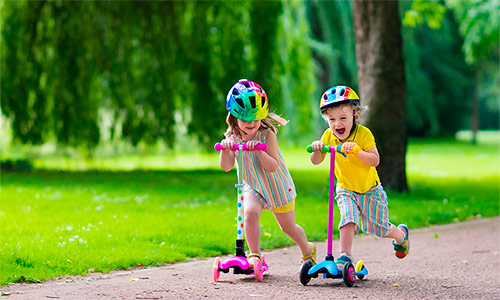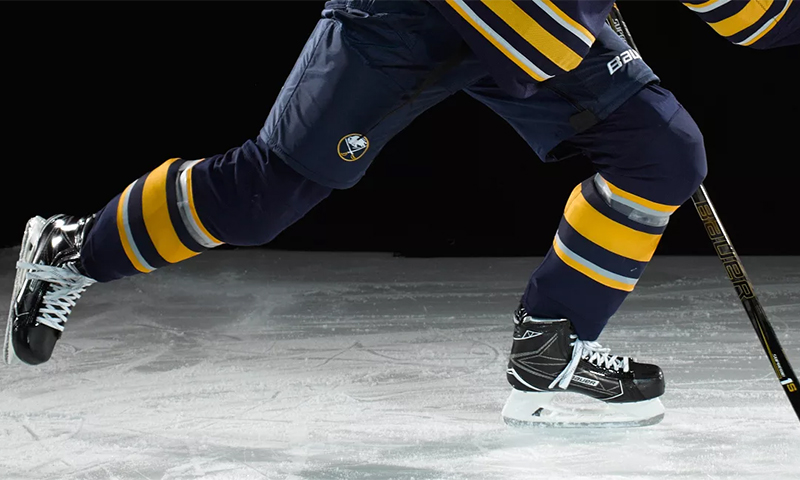The word "pennyboard" has long become a household name. Now almost all plastic boards for urban pokatushek are called this, although initially it was just a separate series of skates manufactured by Penny Australia. Today it is perhaps the most popular type of boards, attracting attention not only for its bright colors, but also for excellent driving characteristics. Neither externally nor in construction, they are not particularly different from each other, so it will be easy to make a choice. The main thing is to remember what the original Penny is different from the copies in order not to have to pay a large amount for a fake of questionable quality.

Content:
The best manufacturers of plastboards - which company to choose
The standard plastic Penny is still considered the products of the Australian company Penny Skateboards. Other companies with different success just repeat its concept.
The closest to the original, judging by the reviews, are closer marks:
- Union;
- Stereo;
- Hubster.
In our recent article, we have already considered the most successful models of pennyboards. Now let's talk about how to choose the right board for yourself or a child, and what details should be given special attention.
The principle of operation and the device pennyboard
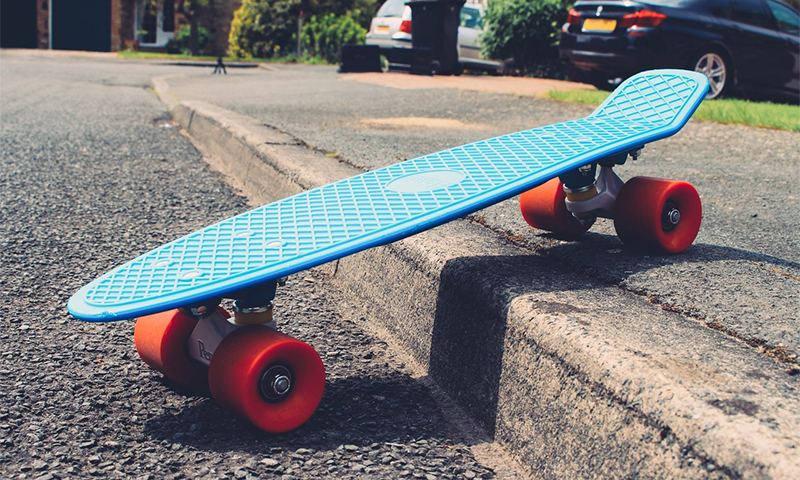
From the usual Penny skateboards, only the size and shape of the deck is different: it is short, fairly narrow and has a pronounced Quictile (tail). The peculiar silhouette of the board was the reason that the pennyboard was sometimes called the "fish".
The very same it is made not of plywood, but of plastic, so it does not need a flu grip - the corrugated surface ensures sufficient adhesion to the sole.
All other elements of urban cruisers are the same as those of other skateboards, although here they have their own peculiarities:
1. Wheels - wide and soft (78A) with a diameter of 59 mm. Excellent show themselves on uneven asphalt and easily "swallow" small cracks and seams of road tiles.
2. Bearings - as a rule, racing, not lower than the seventh grade. The original are collapsible to simplify maintenance.
3. Classic T-shaped tracks - made of durable aluminum alloy and have a rather high profile. Equipped with soft polyurethane bushings, providing good cushioning on rough roads.
The stiffness of the suspension can be adjusted by simply tightening or releasing the central bolts (kingpins). The bushings themselves in the original Penny models are fixed by special suspension stops, which do not allow them to deform or tear strongly on sharp turns.
In cheaper copies, there is nothing of the kind, so their manufacturers put tough bushings on the boards, which is not the best effect on skate handling.
Pennyboard Types
The original Penny from each other basically differ only in design (by the way, if you wish, you can order your own color version from the manufacturer).
The most popular pennyborod series are:
1. Complete monochromes;
2. Motley Custom bright colors;
3. Glam Pastel - respectively, in pastel colors;
4. Glowing Fluoro and Fest Original;
5. Marbles, made "marbled".
Transparent boards and models with ethno or space patterns are also available.
There is another classification of plastboards based on deck sizes:
Original

A series of the smallest pennyboards with a length of 22 ″ (56 cm) with a 3-inch suspension (7.5 cm). Suitable for children from 4 years old, slim teenagers and masters of stunt riding.
The original models withstand the weight of the rider up to 80-100 kg, fakes can have more stringent restrictions - the most flimsy barely pull the rider into 45 kg.
Pros:
- Easy and maneuverable;
- Suitable for stunt riding;
- Fast, keeps balance well;
- Ideal for children and teenagers;
- Convenient to carry.
Minuses:
- Beginners find it difficult to adapt to a narrow deck;
- Not too convenient for owners of legs larger than 42-43 size.
Nickel
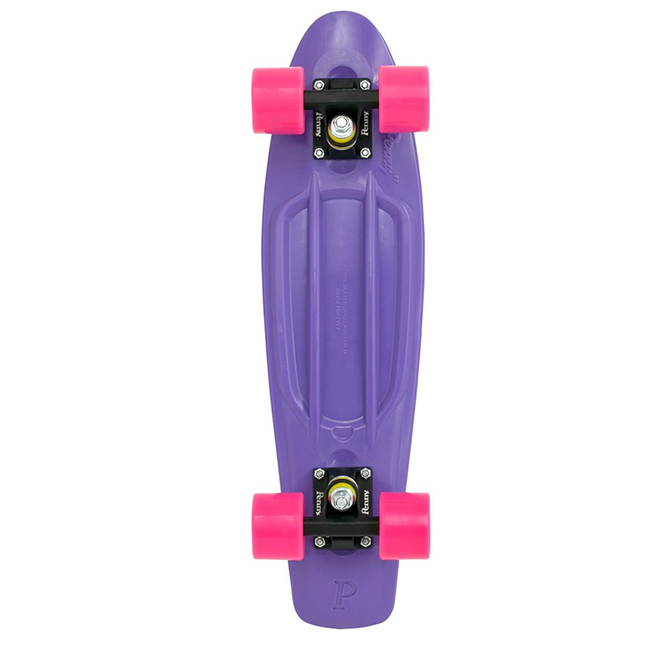
Larger 27-inch boards with a suspension width of 10 cm (4 ″) are addressed to people with greater weight, beginners and the stronger sex, but in fact are suitable for almost everyone without exception.
At Penny Nickel it is easy to keep balance, to enter turns at high speed, and to travel around the city is a real pleasure in general. The original board is able to withstand a load of 95-100 kg, copies here also show a good result - 80 kg.
Pros:
- Stable on the road;
- Convenient deck size for urban cruising;
- Good "loading capacity";
- Fast acceleration;
- Reliable and strong.
Minuses:
- Not as maneuverable as the Original;
- It weighs a little more than 22-inch skateboards.
Not so long ago, the Penny Longboard appeared on the market with a 36 ″ deck and a slit for carrying in hands, equipped with ABEC 9 bearings and more rigid 83A wheels. They have the same advantages as the standard 27-inch models, but are only suitable for experienced skateboarders.
Pennyboard selection options
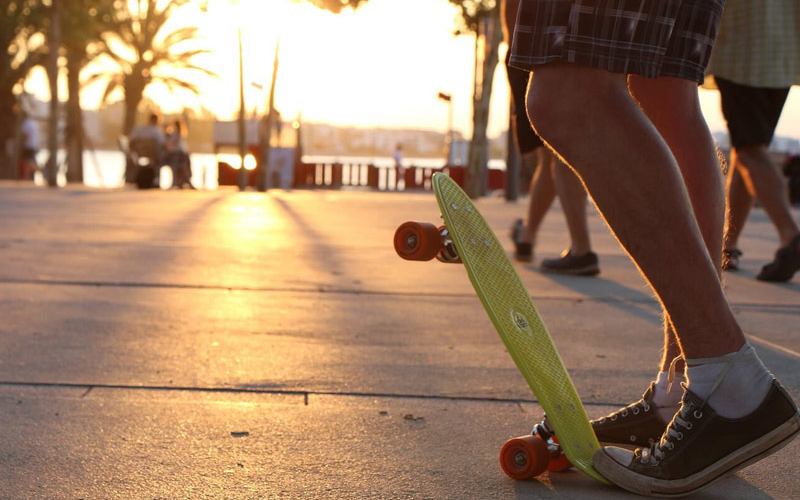
Bearing class
From the accuracy of the performance of bearings in the wheels depends on the speed that you can develop on your pennyboard. Traditionally, the so-called high-end racing bearings are used here, which increases the cost of the projectile.
However, there are other options:
1. ABEC 5 - are considered optimal in terms of price and performance, but in the case of the Pennyboard, their presence indicates that you have a budget equivalent of a cult board.
2. ABEC 7 and ABEC 9 - expensive precision bearings that develop high speed.
3. ABEC 11 - today it is the “fastest” option, however, under excessive load, such bearings can fail.
Standardly, pennyboards are completed with “sevens”, and any experienced rider will have enough of them. So if you are quite satisfied with a fast ride instead of a low flight, there is no sense in chasing other options.
Track material
Pennies are available with three different types of tracks. The originals and sturdy copies go on an aluminum hanger, but some manufacturers may use plastic and steel in pursuit of cost reductions.
Consider the features of all these materials:
1. Aluminum - is relatively inexpensive, but has an enviable durability. Durable, lightweight and completely free from rust.
2. Plastic - valued for its low weight and extremely low cost, but absolutely unreliable. Accordingly, it is used only in the lowest grade Pseudo Penny, addressed to children weighing up to 40 kg.
3. Steel - for the price was somewhere between aluminum alloy and plastic, but by weight it is the heaviest of all possible options. Steel trucks do not provide any special advantages for the rider, but they have another significant disadvantage: susceptibility to corrosion. Because of this, copies of pennyboards often come with painted steel pendants.
Original or copy?
If you decide to buy a real Pennyboard and are ready to pay a serious amount for it, you need to be able to distinguish the original skate from the fake. Carefully inspect the board and try to stand or ride on it to determine its authenticity.
There are a number of signs that distinguish the "correct" Penny from copies:
1. The embossed inscription “Penny Australia” on the surface of the deck is circled if it is a 22-inch model, or simply inscribed along if you choose a board 27 ″. On the underside of the board there are also words-identifiers - “Penny” or “Nickel”, respectively. On the text, the letter R is simply pressed out.
2. The inscriptions must also be present on the hanger (triangular gusset) and the basis of the suspension, plus on each of the four wheels and even on the bearings.
3. This plastboard, despite its light weight, is made of very durable plastic, the formula of which the Australian manufacturer does not disclose.Under his feet, his deck barely noticeably flexes - in contrast to numerous copies that give a noticeable drawdown.
4. Another trademark is soft bushings, “ringed” with special suspension restraints, which we have already mentioned. Due to them, the board does not catch widely spaced wheels when entering a turn.
5. But the stripes under the base of the suspension of the real Pennies on the contrary are rather tough, so metal tracks do not force the deck, which increases the lifespan of the skateboard itself.
6. Bearings on the originals are always collapsible, while all moving parts are factory lubricant - not every copy can boast of it.
Which pennyboard to choose

1. A child under the age of 12 years old and weighing no more than 40 kg does not have to buy the original pennyboard. There are enough inexpensive copies on plastic tracks with deck size of 22 ″ and the “slowest” bearings that you will find - preferably no higher than ABEC 3. In extreme cases, replace the “relatives” for the sake of the child's safety.
2. Teenagers, girls and light athletes will also come up with pseudo Penny Original size, but stronger: on steel or aluminum tracks. Bearing type, choose depending on the riding experience: for beginners it is better to stay on the "top five", masters can already take ABEC 7 and above.
3. If you intend to use your pennyboard as a cruiser or are a big weight owner and a 43+ long foot, it is better to invest in an original skate with a 27 ″ or 36 ″ board. You can use both standard ABEC 7 bearings and higher-end models.
4. Those who need a board to quickly get to the bus stop or the subway station, and then go by public transport, you should take the compact Penny Original as standard. Reach the place - throw it in a backpack.
How much is plastboard
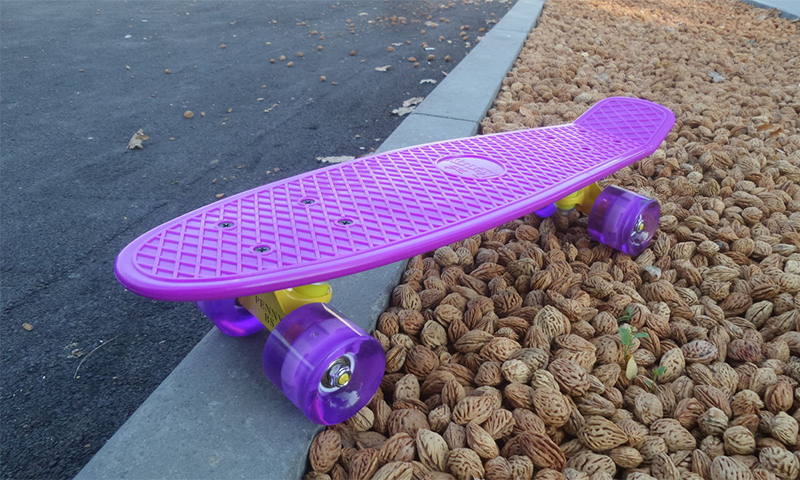
1. A real Pennyboard with a 22-inch deck costs 7-10 thousand rubles. Nickel starts with 8 thousand. If you manage to catch a discount, you can get by with a smaller amount from 5000 to 7200.
2. New Longboard 36 ″ will pull 10-16 thousand rubles.
3. Plastbordy- "fish" from other manufacturers are much cheaper - from 900 to 4000 rubles.
It will be interesting to friends too


